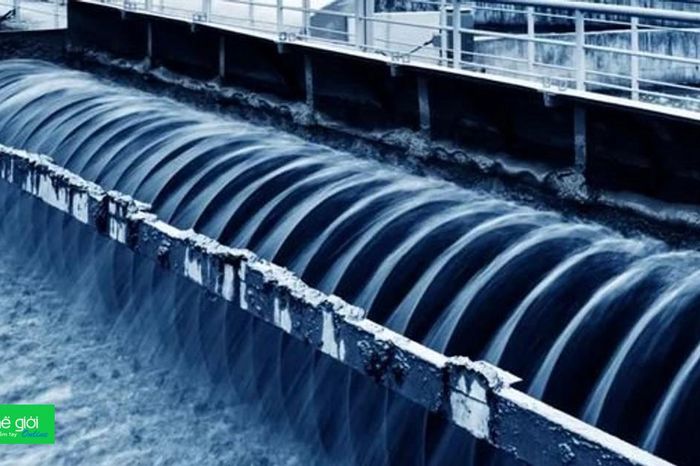India skyrocketed thermal power output, sharply reducing hydropower output
Because rainfall in India is currently erratic, hydropower output in this country has been decreasing rapidly over the past 38 years, specifically, the amount of water stored in hydropower reservoirs is currently the lowest in 5 consecutive years. As of 2018, India produced only 146 billion kWh/year. Insufficient water for hydroelectric power production forces India to rely more on coal - a form of fossil energy that emits a lot of greenhouse gases, causing negative impacts on the environment and the Earth.

According to data from the federal electricity regulator Grid, India, renewable energy accounts for only 11.7% of India's total electricity production. This number will decrease slightly compared to 2023, but compared to the global average, Hydropower output in India decreases faster. This is a worrying thing for the country that has the 6th largest hydropower output in the world.
India is the third largest emitter of greenhouse gases in the world. Meanwhile, per capita emissions here are lower than in developed countries. Therefore, the Indian government often uses this reason to justify the increasing use of coal in its country.
Mr. KJ Ramesh, Former Director of the India Meteorological Department, said that the period from April to June will be the hottest months in the country. The low amount of water in hydropower reservoirs leads to hydroelectric power output during this period remaining low and not enough to meet the increased electricity demand of the Indian people. It is estimated that it will take until the beginning of July every year for the arrival of the monsoon to bring rain, at which time hydropower output can increase. However, for a country with erratic rainfall, India should not focus on hydropower.
Currently, the market share of hydropower in India has gradually decreased, while the market share of coal, solar and wind power generation has increased. In 2023 alone, electricity output from coal and lignite will increase by 13.9%, while electricity output from other renewable energies will only reach 9.7%. India currently relies too heavily on fossil fuels to produce electricity and has been slow to add renewable energy sources in the past 5 years.
Thermal power is a source of electricity converted from fossil energy such as coal, gas, biofuel, nuclear.
Fossil fuels are natural resources buried in the ground for millions of years. They are formed from anaerobic decomposition of biological remains. Fossil fuels contain high levels of hydrocarbons and carbon. They are divided into common types as follows: crude oil, gas, coal.
Producing electricity by burning fossil fuels will produce a lot of greenhouse gases. This is the reason why the Earth is getting warmer, leading to climate change, natural disasters and threatening the survival of species.
You should read it
- 16 things to see and do when traveling to India
- Old iPhone production is at risk of shortages because Foxconn and Wistron's factories in India are forced to close.
- India is developing a $ 10 laptop
- Samsung, Xiaomi, Oppo and LG all simultaneously closed production plants in India
- India found anti-cancer properties in 3 rice varieties
- Foxconn begins production of iPhone 15 in India
- Why must India implement security systems for the power sector?
- Gravity wave detectors will be built in India by 2025
May be interested
- Google and DeepMind apply AI to predict the output of wind farms
 in a statement released today 27/2, google said it has found a way to statistically predict the power output produced by the wind farm.
in a statement released today 27/2, google said it has found a way to statistically predict the power output produced by the wind farm. - The output of smartphones, TVs, and cars in the world is in danger of falling sharply due to the shortage of capacitors
 mlcc or multi-layer ceramic capacitors are only lower than a coin but are one of the important electronic components that are indispensable to any consumer electronics product even in today's cars.
mlcc or multi-layer ceramic capacitors are only lower than a coin but are one of the important electronic components that are indispensable to any consumer electronics product even in today's cars. - Blue Freedom Portable: A small-sized pocket-sized hydroelectric power station that can last for 10 hours and has a charge of 10 hours.
 blue freedom portable works like a hydroelectric power plant, using water power to create energy but tiny to carry easily on trips.
blue freedom portable works like a hydroelectric power plant, using water power to create energy but tiny to carry easily on trips. - The largest rock was excavated in South India
 a huge rock and a series of other interesting archaeological relics have just been found in south india receiving the interest of archaeologists.
a huge rock and a series of other interesting archaeological relics have just been found in south india receiving the interest of archaeologists. - What is 'Thermal Throttling'?
 like most devices that operate on electrical energy, computers will generate heat during use. however, depending on factors such as the duration of use or the way of use, the amount of heat generated is more or less.
like most devices that operate on electrical energy, computers will generate heat during use. however, depending on factors such as the duration of use or the way of use, the amount of heat generated is more or less. - Using liquid metal instead of thermal paste, Asus laptops will be 10 to 20 degrees cooler than usual
 asus will switch to using liquid metal to replace the common thermal paste on the new intel laptop to deal with the huge amount of heat emitted from laptop cpus today.
asus will switch to using liquid metal to replace the common thermal paste on the new intel laptop to deal with the huge amount of heat emitted from laptop cpus today. - How to check the power of the USB port
 are you worried the usb port is performing poorly or is no longer meeting the specifications? this article will guide you how to check the power for the usb port using windows built-in tool, third-party application or voltmeter.
are you worried the usb port is performing poorly or is no longer meeting the specifications? this article will guide you how to check the power for the usb port using windows built-in tool, third-party application or voltmeter. - The next iPhone you buy may be made in India
 apple is planning to move its iphone manufacturing operations to india ...
apple is planning to move its iphone manufacturing operations to india ... - Cave tourism promotes conservation of underground heritage in India
 meghalaya is a northeastern state of india famous for its lush landscape and rich cultural heritage.
meghalaya is a northeastern state of india famous for its lush landscape and rich cultural heritage. - 16 things to see and do when traveling to India
 india is known as a country with a long history and many mysteries, not only that, they have lots of interesting things that make you have to visit at least once in your life. now, let's experience 16 things to see and do when traveling to this crowded asian country.
india is known as a country with a long history and many mysteries, not only that, they have lots of interesting things that make you have to visit at least once in your life. now, let's experience 16 things to see and do when traveling to this crowded asian country.










 Internet speed reached a record of 301Tb/s
Internet speed reached a record of 301Tb/s Samsung will treat and reuse 400 million liters of wastewater per day to produce chips
Samsung will treat and reuse 400 million liters of wastewater per day to produce chips Vultur banking malware reappears with many dangerous features
Vultur banking malware reappears with many dangerous features Japan invested 33 billion USD to design a new hydrogen-powered passenger aircraft
Japan invested 33 billion USD to design a new hydrogen-powered passenger aircraft Are smartphones strong enough to 'shoulder' a giant AI model?
Are smartphones strong enough to 'shoulder' a giant AI model? Many US states have proposed laws banning lab-grown meat
Many US states have proposed laws banning lab-grown meat